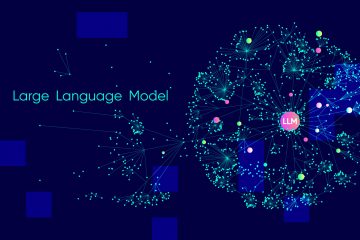Market analytics are an indispensable resource in the business landscape. This is where Big Data comes in. Essentially, Big Data refers to record logs that have been compiled from various data sources. By performing analytics on this information, a business can monitor and forecast patterns of behavior.
Analytics tools such as Google Analytics have been gaining popularity for their efficiency with handling such Big Data without the need for expert data scientists.
Examples of Big Data: purchased items, commonly visited webpages, likes and shares, response to price changes, etc. This information is collected in two distinct ways.
Structured Data
This refers to easily quantified statistical data. Usually presented in the form of numbers or percentages. Also containing straightforward qualitative data: age, income bracket, occupation, etc.
Unstructured Data
This is subjective and entirely qualitative. This information is more insightful and in-depth, however it’s difficult to convert it into a business strategy due to its un-statistical nature.

How can small businesses use big data?
Typically, the average SMB (small to mid-sized business) owner will be under the impression that big data is only relevant to large corporations. This is highly inaccurate because big data offers massive assistance to any business. Read about small business more.
The only distinction is that an SMB will generate less data in comparison. As such, SMB’s are in a highly advantageous position as they can work fast to identify which trends are important.
When a small business is quick on the draw and capitalizes on these trends, they can forecast which resources carry higher importance than others. And begin generating higher profits for their quick reaction time.

How does big data benefit a business?
Generally speaking, big data offers businesses a chance to predict and capitalize on customer behavior to maximize profit. However, this is fairly simplistic so let’s elaborate further.
Minimize Risk
Having an easy reference for current trends and behaviors means that all business decisions are highly low-risk. Analytics tools will be able to provide evidence for why some decisions will be more successful than others.
Compiling Data From All Over The Internet
With regard to big data you aren’t constrained by any limitation. You can compile and execute a data analysis for information collected across the internet. This includes social media sites such as, Instagram, and Twitter.
Customized Experience
Analytics tools are in a position where they can monitor sources in real-time. The intended result of this is a highly consumer-centric experience for visitors of the site. This usually takes the form of presenting similar products, offering discounts, or similar types of services to encourage potential customers.

Why should small businesses be using big data?
Ultimately, the main goal for every small business is to expand into a larger one. At previous points in time, it was fairly risky and unpredictable to accomplish this goal. To that end, technology has evolved in order to support this goal through the various metrics provided by big data.
Efficient Allocation of Resources
Small businesses are working with a lot of limits, from less man-power to less monetary backing. As a result, the resources they have access to are fairly restricted.
By working in conjunction with big data, small businesses can rely on analytics to help them identify the most practical way to manage their resources.
Identifying the Needs of Customers
Monitoring customer habits provides relevant insight into what customers are looking for and the best way for your business to meet those needs.
A small business can compile big data and identify strategies using analytics tools. Thusly, they can plan for growth around the needs of customers.
Assess All Factors When Setting Prices
Small businesses operate out of local markets so it’s of utmost importance to analyze economic trends in the relevant area. Products and services need to be accessible to develop a business. With big data you can set a price point that generates profit while suiting clients.
Keeping Up With The Competition
Something of a double-edged sword, but still a fairly advantageous aspect of big data. Analytics tools can also assess the trends and customer behavior of your competition and vice versa.
Being able to anticipate their next move is invaluable perspective as it adds further context for more informed decision-making.

What are the various data sources of Big Data?
To use data as practically as possible, it’s important to understand how it’s organized by analytics tools. Depending on the nature of the small business you might need to rely on one more than the other. It’s also helpful to draw a distinction between data collected within the company (internal) and without the company (external). Talk to our expert to know more.
Social Data
This is the information compiled by applying analytics to social media. This kind of data looks very closely at user behavior and the manner in which relevant topics are discussed. Close attention is also directed towards which material and platforms receive the most engagement. This is external data as the business in question does not possess ownership of it.
Customer Analytics
Using your own website as a source carries the advantage of understanding the very core aspects of catering to your clientele. This includes logging popular purchases, items frequently bought together, times of the day which generate the most traffic, demographics, etc.
Identifying ordinary customer behavior also serves to improve cyber security as deviating can alert the IT team that something is amiss. This is considered internal data as the company is looking at their own site.
Google Trends
A data source that generates big data through Google’s own search engine. Since the research algorithm has been designed with forecasting in mind, it has become a highly popular data source among owners of small businesses. The added convenience of this source is that it works seamlessly with Google Analytics to convert the information into an actionable business plan.

Conclusion
With all this being said, it’s obvious that Big Data is a tool which cannot be ignored by any business owner. Particularly in the case of small business owners, it offers a competitive edge like never before. Thanks to accessible tools like Google Analytics and Trends, it’s possible to make sense of as much data as a large corporation even with the help of data scientists. Though for the middle-sized and large-sized companies there is usually a necessity to have data analysts on board.



